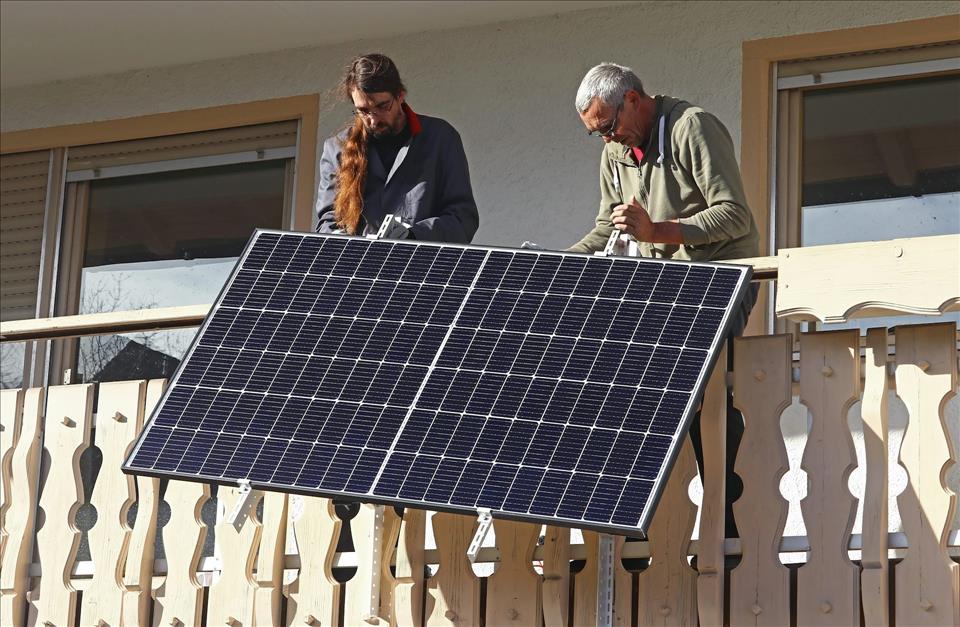
Plug-In Solar Panels Are The Latest Green Energy Trend Here's What You Need To Know
Instead of having to be wired into the house, you can feed the power generated by these panels into an inverter and a standard plug. Is this something that might catch on in the UK? Let's investigate.
First, solar installations usually come under “permitted development” with regard to planning permission. But you still might need to apply, particularly if you live in a shared development or a listed building.
For example, some apartment blocks are insured collectively; if solar panels are going to affect the building's insurance , it's going to affect the whole block. There may also be rules regarding what you can put on your balcony, so consult your building manager.
The UK government is promising to ease restrictions on solar balconies , but we shall have to see how it addresses these issues.
There are also safety concerns . The power generated by the panel has to be balanced with consumption. Which, in practice, may restrict their use to a circuit that only connects to low-power devices (lights, TVs or computers are fine, but not ovens or kettles).
So you need to be aware of what the panels are connected to, particularly if you have an older home which may have been built before modern electrical safety standards. Also, to connect the panels, you would need a weatherised external plug , which not all flats have.
How much power could you get?As luck would have it, I have a south-facing balcony, so let us run the numbers.
'Balkonkraftwerk' has been installed on 1.5 million homes in Germany. Ronald Rampsch/Alamy Stock Photo
I came across a 800W system online that sells for £499 (with supports that would allow me to mount it). It has an area of 3.95m2 and is made of a thin photovoltaic film (about 10-12% efficient).
The optimum angle for a solar panel in Edinburgh where I live is 37.6 degrees. Mounting them vertically (draped over the railing of a balcony, as is often the case) will reduce performance , with typical losses of 30-45% . My balcony is also completely shaded for half of the day due to a neighbouring building, so a panel will generate little power at those times.
A vertically mounted solar system in France. This is not the best angle for generation. Asurnipal/Wikimedia , CC BY
The position of the sun varies as it moves across the sky during the day, as well as seasonally, as does the solar energy received. We can input this data plus our location into an online calculator , which will account for hourly and seasonal variations.
This estimates output for a vertically mounted panel at 132 kilowatt-hours per year (kWh/yr). Assuming electricity costs of £0.24/kWh, that means a payback period of 15.7 years (thin film solar systems typically last between ten and 20 years).
If we could orientate the panel at the optimum angle of 37.6° (tilt them out from the edge of the balcony), the power generated would rise to 182 kWh/yr (a payback period of 11.4 years, although this could fall foul of planning rules).
Balcony solar panels angled to achieve optimum performance. Triplec85/Wikimedia , CC BY
Free from the shading of my neighbour on the top floor and angled optimally, output from a plug-in panel could rise to 370 kWh/yr (payback 5.6 years). But this is for south-facing balconies. An east- or west-facing balcony would produce 30% less power and a north-facing panel, half as much or less.
Is it worth it?Another issue is that you can only use the generated electricity when you are in the house . If, for example, I'm out half the time the panels are generating power (which is likely), the payback period doubles – so they will probably never pay for themselves. A battery could help store power for use later, but that adds costs plus the hassle of wiring everything up.
Let's look at a monocrystalline panel (these last longer than film and are more efficient) that is roof-mounted at the optimum angle (so it's clear of any obstructions) and wired up to feed into the grid so any power you don't use, you can sell it to the network.
Rooftop solar panels on an apartment block in Berlin, Germany. Georg Slickers/Wikimedia , CC BY
Assuming a 4kW monocrystalline array at an installation cost of £5,500 , the online calculator estimates generation of 2,970 kWh/yr for a payback period of 7.7 years (on a system that will last 25-30 years). And that's not even considering any possible grants that you might be eligible for.
Whether or not balcony solar is feasible is going to be very site-specific. If you have a balcony with an uninterrupted view south and you are not going to fall foul of any planning or electrical issues, it might be worth it.
If you face north, or there's another building in the way, or your fuse box looks like a prop from Downton Abbey, less so. In many cases, a solar generator mounted at an optimum angle and exporting electricity to the grid might be a better idea, even if the initial installation costs are higher.
Don't have time to read about climate change as much as you'd like?
Get a weekly roundup in your inbox instead. Every Wednesday, The Conversation's environment editor writes Imagine, a short email that goes a little deeper into just one climate issue. Join the 45,000+ readers who've subscribed so far.

Legal Disclaimer:
MENAFN provides the
information “as is” without warranty of any kind. We do not accept
any responsibility or liability for the accuracy, content, images,
videos, licenses, completeness, legality, or reliability of the information
contained in this article. If you have any complaints or copyright
issues related to this article, kindly contact the provider above.

















Comments
No comment